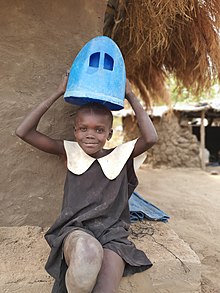
Nearly half of all refugees are children, and almost one in three children living outside their country of birth is a refugee.[1] These numbers encompass children whose refugee status has been formally confirmed, as well as children in refugee-like situations.

In addition to facing the direct threat of violence resulting from conflict, forcibly displaced children also face various health risks, including: disease outbreaks[2] and long-term psychological trauma,[3] inadequate access to water and sanitation,[4] nutritious food,[5] health care [6] and regular vaccination schedules.[2] Refugee children, particularly those without documentation and those who travel alone, are also vulnerable to abuse and exploitation.[6] Although many communities around the world have welcomed them, forcibly displaced children and their families often face discrimination, poverty, and social marginalization in their home, transit, and destination countries.[7] Language barriers and legal barriers in transit and destination countries often bar refugee children and their families from accessing education, healthcare, social protection, and other services. Many countries of destination also lack intercultural supports and policies for social integration.[8] Such threats to safety and well-being are amplified for refugee children with disabilities.[9] Studies done by the U.N. High Commissioner for Refugees show that only half of all refugee children that are elementary school-aged are able to access schooling. Similarly, amongst secondary school-aged children, only 22 percent of children can access schooling. Unfortunately, this culminates in a rate of access to higher education of only one percent amongst all refugees.[10] Additionally, North American schools often do not have the resources needed to support refugee children. [103] Refugee children often have to handle discrimination, low socioeconomic status, have no family, or come to a setting that clashes with their cultural beliefs leading to behavioral issues teachers are not always prepared for. [117] Extracurricular resources provided to refugee children include supplementary curriculum enrichment resources, videos for the goal or increasing parent and school awareness, informational leaflets and handbooks, as well as ICT based resources, which serve to benefit refugee involvement in the school.

- ^ Emily Garin, Jan Beise, Lucia Hug, and Danzhen You. 2016. “Uprooted: The Growing Crisis for Refugee and Migrant Children.” UNICEF. https://www.unicef.org/videoaudio/PDFs/Uprooted.pdf Archived 2020-02-02 at the Wayback Machine.
- ^ a b Toole, Michael J., and Ronald J. Waldman. "The public health aspects of complex emergencies and refugee situations." Annual review of public health 18, no. 1 (1997): 283-312.
- ^ Kaplan, Ida. "Effects of trauma and the refugee experience on psychological assessment processes and interpretation." Australian Psychologist 44, no. 1 (2009): 6-15.
- ^ Schweitzer, Robert D., Mark Brough, Lyn Vromans, and Mary Asic-Kobe. "Mental health of newly arrived Burmese refugees in Australia: contributions of pre-migration and post-migration experience." Australian & New Zealand Journal of Psychiatry 45, no. 4 (2011): 299-307.
- ^ Hamilton, Carolyn, Kirsten Anderson, Ruth Barnes, and Kamena Dorling. "Administrative detention of children: a global report." Fondo de las Naciones Unidas para la Infancia, Nueva York (2011).
- ^ Vandenhole, Wouter, Ellen Desmet, Didier Reynaert, and Sara Lembrechts, eds. Routledge international handbook of children’s rights studies. Routledge, 2015.
- ^ Bush, Kenneth David, and Diana Saltarelli. "The two faces of education in ethnic conflict." (2000).
- ^ Crock, Mary. Seeking asylum alone: A study of Australian law, policy and practice regarding unaccompanied and separated children. Federation Press, 2006.
- ^ Reilly, Rachael. "Disabilities among refugees and conflict-affected populations." Forced Migration Review 35 (2010): 8.
- ^ Schorchit, Nicolle (March 21, 2017). "Despite Inclusive Policies, Refugee Children Face Major Obstacles to Education". National Education Association. Retrieved December 2, 2021.